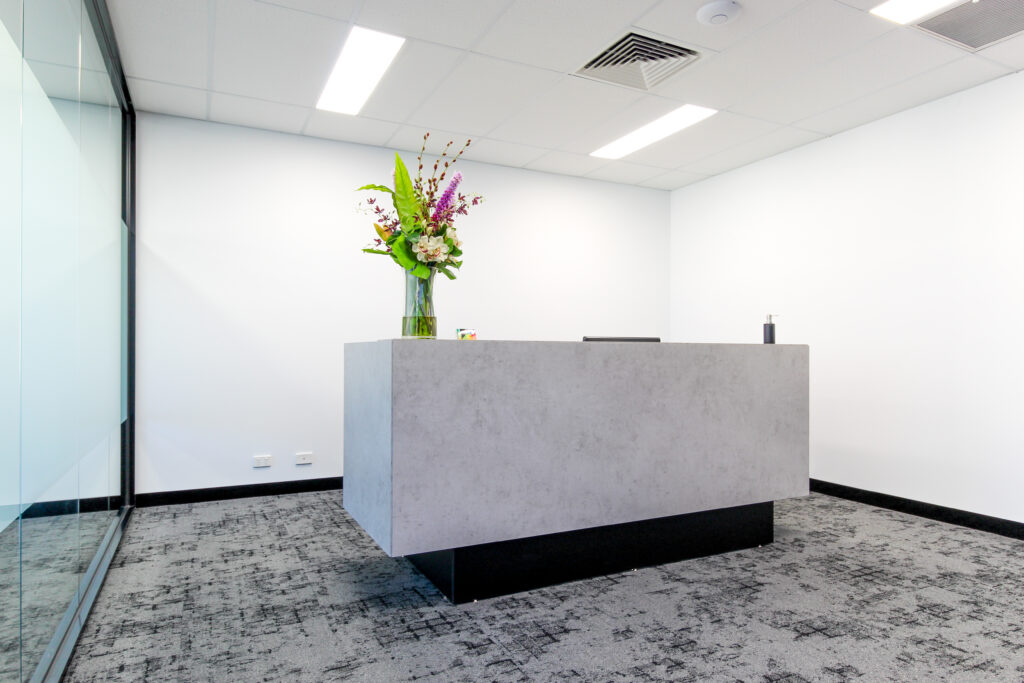This article walks through the new definition of a workplace strategy, agile workplace options, and five steps you can use to tailor your workplace strategy to the needs of your organization and employees.
What is a workplace strategy?
A workplace strategy is a systematic evaluation of how the workplace is being used to optimize a company’s effectiveness and efficiency. A well-planned workplace strategy can do wonders for your company’s output and performance while improving collaboration and teamwork. It also can reduce absenteeism and presenteeism while increasing employee engagement.
What’s more, it can also help attract and retain top talent. Companies that fail to account for how the physical office contributes to their overall business objectives may struggle to meet employee expectations, which can result in a decrease in employee engagement and performance.
Changes in how, where and when we work have paved the way for new work models to emerge. Organizations can survive and thrive by adapting their workspace to support these changes. But how do you know what is best for your team? There is no single solution, so developing a unique strategy for your organization is critical.
5 steps for tailoring your workplace strategy

1. Connect your Business goals and your People plan.
Workplace strategies that put both people and business at the heart of the process are better equipped to remove inefficiencies and streamline operations. Your workplace strategy should be designed to make your business more effective and more agile, consciously and meticulously linking to your business goals, strategy and workers’ needs.

2. Include your staff.
Workplace strategies are implemented to address the concerns and effectiveness of employees. Without the assistance of your employees, it’s nearly impossible to make long-term strategic decisions that will benefit your company.
Understanding your unique work culture and how your employees work best is critical for developing an effective, people-centric workplace strategy. The most successful office environments accommodate all work styles to provide employees with enough variety. The conditions for your unique workplace strategy will be determined by how your employees work.

3. Understand the current state of your workplace.
Regardless of where you want your workplace to go, it’s important to start by taking stock of where you are. Take a pulse of your workplace and assess whether or not it’s aligned with your goals.
- Space management.
- Operational costs of workplaces.
- Security and compliance.
- Employee satisfaction.
- Employee engagement.
- Energy efficiency.
- Revenue of Workplaces.
Once you’ve started to outline where your organization is currently excelling or needs improvement, you can include suggestions for how to better optimize your workplace in your workplace strategy.

4. Plan for the future.
A well-executed workplace strategy can help your company, especially when it includes plans for anticipating growth and dealing with adversity or the unknown. By gathering data now and assessing your team every eight to 12 months, you can better predict—and prepare for—what the future will hold for your workplace.
Developing a workplace strategy isn’t easy; many factors, from business objectives to work culture to employee expectations, come into play. However, having a business strategy and a people strategy, including your employees, and understanding how your people work will help you make data-driven decisions, which is an excellent step toward developing the best workplace strategy for your company.

5. Get specific and document it all
Now that you’ve done the research part of building your workplace strategy, it’s time to take pen to paper and write down everything you hope to accomplish with your new strategy. You’ll want to get as specific as possible to make sure you’re able to get from point A (today) to point B (wherever you plan to go).
Rather than list out tactics, your strategy should explain where you will focus your efforts and why. Say, for instance, that your objective is to reduce your cost per square meterage. Will you focus on maximizing the space you have or instead explore leasing a new space with a lower cost per square meter?
Before you finalize your strategy, share it with your immediate team to make sure it aligns to everyone’s expectations and goals.
Ever been in a meeting where everyone is talking, but at the end, you’re still in the same place?
At Office Vision, our team of workplace experts allow us to look at your business strategically and holistically. We can help you distill the business goals and objectives whilst connecting with your people to provide targeted decision making, and outcome-driven strategy.
Are you ready to Workplace Strategy Workshop and get REAL results?
Connect with us today!
Contact Office Vision for a Free Consultation
Ready to transform your workplace into a hub of collaboration and creativity? Click below to contact Office Vision today for a FREE Workplace Strategy session. Our experts are here to help you unlock the full potential of your office space and unleash the power of collaboration in your organisation.


